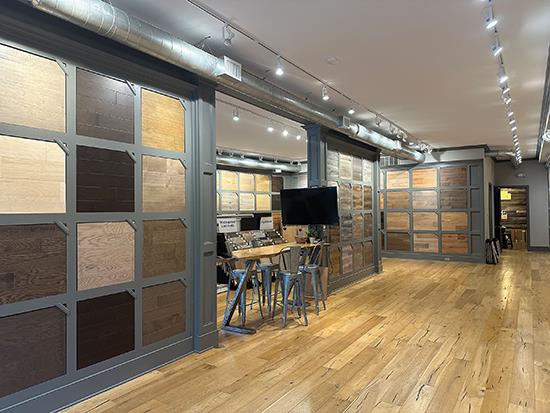Top 100 Retail: The rise in mortgage rates has impacted every segment of the residential flooring market – Nov 2023
By Darius Helm
With the pandemic-driven boom in the rearview mirror, coupled with inflation and rising interest rates, the residential flooring market is more hobbled than it has been for several years. While the retailers that populate the Top 100 list tend to fare better than the average flooring retailer, even these leading players are feeling the impact of economic and housing conditions on their bottom lines.
The market segment faring worst is currently residential remodel, followed by single-family builder, then multifamily. Regionally, many of the markets in the Southeast, including Florida, and Texas to the west, are outperforming softer regions like the West Coast, Northwest and, to some extent, the Northeast.
According to Carpet Exchange’s Bruce Odette, “The biggest impact on business in my opinion is the higher interest rates. While interest rates have gone up significantly in the past year, home prices have only come down marginally. This has slowed down the consumer from moving into new homes, as well as pulling equity out of their homes for remodel projects.
“I would have to say our biggest competition is postponement. If we do not execute the sales process to the best of our ability, the customer has many other options. We are selling a luxury item that is not always necessary to purchase. It’s a want, not a need.”
STATE OF THE MARKET
Housing numbers paint a vivid picture. Existing-home sales have been down year over year every single month since the beginning of 2022 and have been down month over month all but three times (January 2022, February 2023 and May 2023). At the same time, median home prices have climbed, and inventory levels have fallen.
New-home sales were down year over year every month in 2022 and through March of this year, when they started to recover. Since about a year ago, they have gained month by month, except last August, which was down 8.7% from July, but September rebounded strongly, up 12.3% over August and up 33.9% year over year. And through September, housing starts have been down year over year except for in May and July.
These numbers reflect consumer demand. Rising mortgage rates have led homeowners to hold onto their existing properties because they don’t want to move to another home and face a higher rate. This means fewer existing homes on the market and being sold.
It also means that those who are renting are more likely to keep renting for now, and this has helped keep the multifamily turns business fairly healthy. And because of demand, multifamily new construction has also stayed active, though inflation and higher interest rates have held back growth, and signs are that multifamily new construction is now slowing.
Apartment turns are also showing signs of slowing, according to Real Floors, a leader in that market, but a lot of new supply has come online in recent months and absorption rates are healthy.
Then there is the new home market, which has been busier because, irrespective of these market conditions, there’s still a need. The U.S. housing market is underbuilt, with a distinct lack of affordable housing, leading many people to live beyond their means. But the same mortgage barrier exists for new homes as it does for existing homes. According to FEI Group, some home building firms, particularly those larger firms that have their own finance arms, are trying to lure customers by offering lower mortgage rates, say 5% instead of 7%.
According to a Wall Street Journal article last month, “The highest mortgage rates in 23 years are dragging down home sales to their lowest levels since the subprime crisis period.” The article cites economic forecasts that project sales of existing homes will fall “to a rate not seen since 2011.” And it references Chen Zhao, economist for real-estate brokerage Redfin, who estimates that the year will likely end with only 4.1 million sales of existing homes, the slowest pace since 2008.
For some dealers, growth in the single-family rental (SFR) market-which focus on suburban communities-have helped buoy their businesses. In some cases, entire housing developments will be created for the SFR market. Most retailers serving this market expect it to continue to grow for as long as the housing shortage remains.
It has been widely reported that younger generations don’t have the same desire to own a home as older generations, and there has been a lot of speculation about why this is-that younger generations don’t want to be tied down and encumbered, valuing autonomy and freedom over putting down roots; that those just entering the workforce tend to not yet be settled, more so these days than in the past; that Millennials and Gen Zers, as a result of growing up in both physical and virtual realities, have less attachment to the heft of reality; or that the world has turned into a rental model (consider how much of one’s income goes toward the rental of services versus the purchase of products). But the most compelling explanation might come from FEI Group’s Max Holland and Graham Howerton, who note that the young people now of buying age grew up in their parents’ homes during the Great Recession and the collapse of the housing market. They saw home ownership at its most unstable.
For the complete story of the Top 100 Retailers, see the November 2023 issue of Floor Focus Magazine.
Copyright 2023 Floor Focus
Related Topics:FEI Group, Armstrong Flooring
